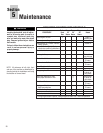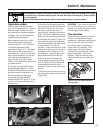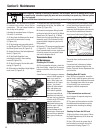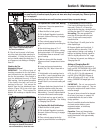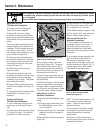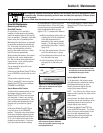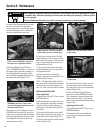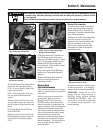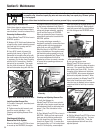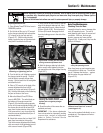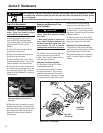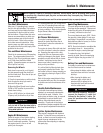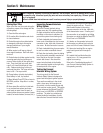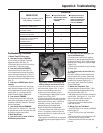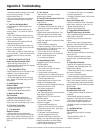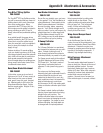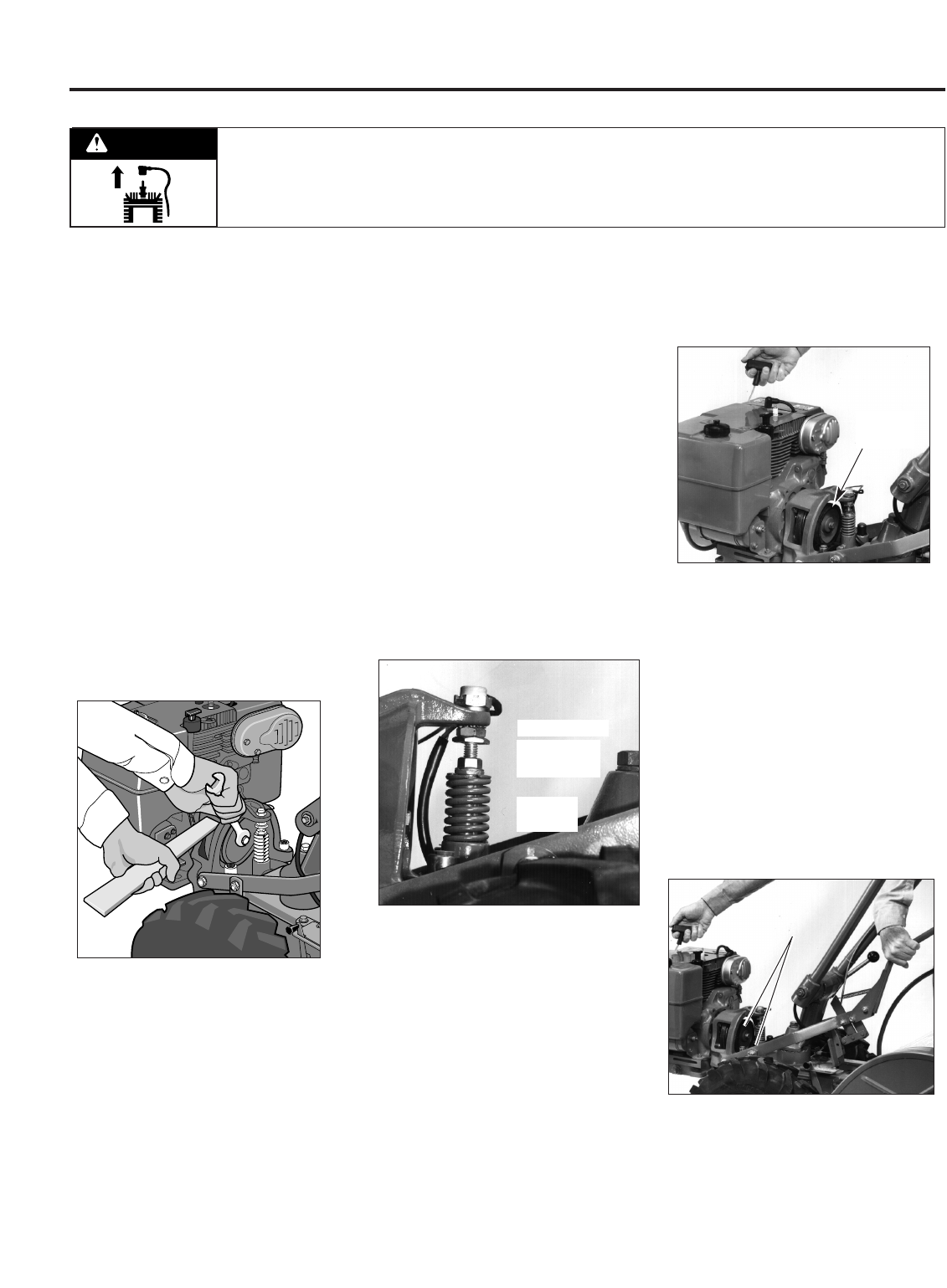
Replacing the Reverse Disc
Follow these steps to replace the reverse
disc. (If your tiller has a Bumper Attach-
ment mounted, it must be removed first.)
Removing the Reverse Disc
1. Move Wheels/Tines/PTO Drive Lever in
NEUTRAL position.
2. Wedge a 5/16"-thick board between top
of engine pulley (avoid contacting reverse
disc) and cast iron housing next to it.
This immobilizes pulley.
3. Use a 9/16" wrench to loosen the
mounting bolt shown in Figure 5-23.
Remember to immobilize the pulley with
the wood wedge while loosening the bolt.
If necessary, pry the disc from the pulley
with the tip of a screwdriver. Back the
bolt out as far as possible. Then angle
the disc a little to remove it. Bring the
bolt and lockwasher along with the disc.
Installing a New Reverse Disc
1. Do steps 1-through-3, described previ-
ously, in reverse.
2. Tighten mounting bolt securely, and
check for correct operation — see
Checking and Adjusting Reverse Drive
System
.
Checking and Adjusting
Reverse the Drive System
When the Wheels/Tines/PTO Drive Lever
is moved up into REVERSE, the engine
and engine mount move down to press
on the reverse adjustment bolt (Figure 5-
24). This action compresses the reverse
spring and plunger assembly, requiring
you to hold the lever up in REVERSE.
When you release the lever, the spring
automatically pushes the lever back into
NEUTRAL position.
The spring and plunger assembly is
designed to prevent the reverse disc from
making contact with the transmission
pulley until you shift into REVERSE.
When the lever is in NEUTRAL, the switch
body on the bottom of the engine mount
tab should be resting squarely on top of
the reverse adjustment bolt (Figure 5-24).
The reverse adjustment bolt can be
adjusted up or down to correct a number
of reverse drive operating problems, as
explained next.
Checking and Adjusting Reverse Disc
1. Verify that linkages for
Wheels/Tines/PTO Drive Lever are lubri-
cated with oil and engine mount bars and
belt adjustment block are lubricated with
grease. (See
Tiller Lubrication in this
section.)
2. Place Wheels/Tines/PTO Drive Lever in
NEUTRAL. Briefly pull out engine recoil
start rope while watching reverse disc.
The disc should turn, but lower pulley
should not (Figure 5-25). If reverse disc
turns lower pulley, or if it is located closer
than 3/16" to the pulley, reverse adjust-
ment bolt should be adjusted upward (see
instructions that follow). Moving adjust-
ment bolt upward will also solve problem
of a tiller that goes into REVERSE on its
own.
3. Use your left hand to hold
Wheels/Tines/PTO Drive Lever up in
REVERSE, while briefly pulling out engine
start rope. The reverse disc should turn
lower pulley (see Figure 5-26). If not, or
it requires a lot of pressure to hold lever
up in REVERSE, then reverse adjustment
bolt must be adjusted downward. When
correctly adjusted, the Wheels/Tines/PTO
Drive Lever should pop out of reverse
when the lever is released, but not require
exceptional effort to hold it up in reverse
position.
4. Shift the Wheels/Tines/PTO Drive Lever
to REVERSE and then let it go. The lever
should return to NEUTRAL. If not, the
reverse adjustment bolt will have to be
adjusted upward.
Figure 5-23: Removing Reverse Disc.
OIL
Figure 5-25: Checking Reverse
Disc in NEUTRAL.
Figure 5-26: Checking Reverse Disc
in REVERSE.
Both Pulleys
Should Turn
Section 5: Maintenance
Before inspecting, cleaning or servicing the machine, shut off engine, wait for all moving parts to come
to a complete stop, disconnect spark plug wire and move wire away from spark plug. Remove ignition
key, if so equipped.
Failure to follow these instructions can result in serious personal injury or property damage.
WARNING
Figure 5-24: Spring and plunger
assembly.
Switch Body
Spring &
Plunger
Adjustment
Bolt
➧
➧
➧
Reverse
Disc
36



